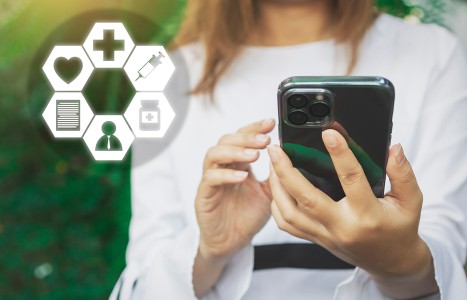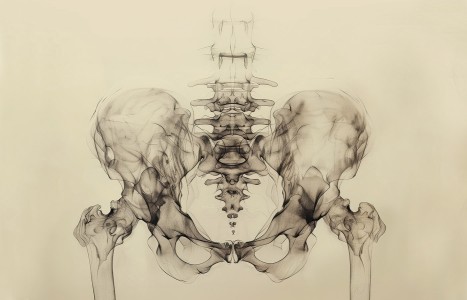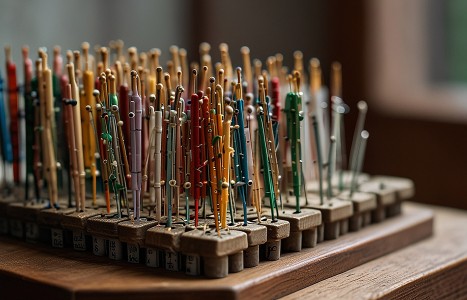People today want convenience, whether it be from their bank, credit card, favorite retail store, or restaurant. They demand it from the companies who hold their loyalty, including their health care providers (you). They don’t want to call and possibly be put on hold, and they want to use an app or schedule an appointment on your website. Here are three reasons your practice can gain by switching to online appointment scheduling.
Shedding Light on the Benefits of Heliotherapy
I can't imagine anyone not feeling good strolling in the sun on a beautiful spring day. The sun is responsible for all life on earth and is best illustrated along the equator touting the richest biodiversity on the planet, in stark contrast to the Arctic Circle and South Pole.
The sun has been worshiped in ancient Egypt and has a rich history of being valued for its healing properties. Let's explore the benefits of the sun for our health and well-being.
We are all fully aware that sun exposure promotes the production of vitamin D and is intrinsically involved with our circadian rhythm. However, did you know the sun can improve blood pressure; clear skin conditions such as psoriasis; and even effectively treat tuberculosis? Sunlight therapy/heliotherapy or phototherapy has been used for thousands of years, and only recently has the research community begun to study its biological effects.
Today these terms are also applied to artificial sources of light. Sunlight can be broken down into the frequency spectra of visible light, infrared and ultraviolet (UV) radiation. The two wavelength ranges that affect the skin are UVA (315-400nm) and UVB (280-315nm); UVA penetrates deeper, but UVB will burn the skin with less exposure.
Helio Warnings

Excessive sun exposure has been implicated in skin cancer, premature aging and skin damage. Some researchers point to the overconsumption of processed food as a risk factor for sun damage — omega threes from fish and other sources high in EPA and DHA and astaxanthins conversely help protect our skin from sun exposure. As a matter of fact, green tea is also highly protective.
Absence of Light
According to the Centers for Disease Control and Prevention, 31 percent of non-Hispanic black Americans have vitamin D deficiencies, followed by 12 percent of Mexican Americans, and three percent of non-Hispanic whites.1
Some experts suggest that we're not spending enough time outdoors and too much time in front of computers and video games. Dr. Stephanie Seneff, a senior scientist at MIT, asserts that glyphosate (found in roundup that's sprayed on wheat) disrupts cytochrome P450 enzymes in the liver that are used to activate vitamin D, causing a nationwide deficiency.
The Sun and the Classics
In the Huangdi Neijing, there are a number of references about the benefits of sun exposure, here are a few:
- Chapter 2: Go to rest late at night and rise early. Never get enough of the sun.
- Chapter 3: If the sun were to lose its location, then this would reduce the longevity of man.
- Chapter 26: Hence, when heaven is warm and when the sun is bright, then the blood in man is rich in fluid, and the guard qi is at the surface. (This can be interpreted as immune system support, and lack of vitamin D can lead to anemia.)
- Chapter 36: Patients love to see the light of sun and moon. Exposure to re qi makes them happy.
In a recent discussion with Jeff Nagel, the Taoists saw the sun as Yang (daylight) and the moon as Yin (darkness) reflecting what's written in the Neijing. During the day, qi circulates superficially, and at night it circulates deeply, nourishing the internal organs and bowels. If these cycles are disrupted, then disease may develop.
Scientific benefits
In the late 1850's Madame Duhamel exposed French children to sunlight to help them recover from tuberculosis. Dr. Niels Finsen was awarded a Nobel Prize for using an artificial UV light to treat lupus vulgaris in the early 20th century. Finsen suffered from Pick's disease that resulted in low cardiac output, ascites, and restrictive pericarditis. In 1893 he wrote the following2:
"My disease has played a very great role for my whole development … The disease was responsible for my starting investigations on light: I suffered from anemia and tiredness, and since I lived in a house facing the north, I began to believe that I might be helped if I received more sun. I therefore spent as much time as possible in its rays. As an enthusiastic medical man I was of course interested to know what benefit the sun really gave … My intention was even then to use the beneficial effects of the sun in the form of sun bathing or artificial light baths, but I understood that it would be inappropriate to bring it into practical use if the theory was not built upon scientific investigations and definite facts. During my work towards this goal I encountered several effects of light. I then devised the treatment of smallpox in red light and further the treatment of lupus vulgaris … During the last few years, I have, however, become convinced that it does not help to wait until I find the answer I am looking for in the laboratory, but that it is justified to work also with clinical experiments. Thus, both approaches can be carried out simultaneously in the effort to reach the final goal."
Helio Studies
Since the late 1800s, over 400 clinical studies reveal that UVB lamps are effective treatment for psoriasis and vitiligo as well as other skin conditions. Sunlight has been found to accelerate wound healing and has antibacterial properties. As a matter of fact, a 2014 research study found that the application of UV light reduced hospital acquired multiple drug resistant organisms by 20 percent.3 This is the mechanism referred to in medical literature for heliotherapy to be effective in treating acne and cutaneous tuberculosis. The table above demonstrates the protective effects of vitamin D.
In a randomized cross-over clinical trial, Snellman et al. treated 95 psoriasis patients with four weeks of heliotherapy, where the majority of the participants had immediate alleviation of their psoriasis, and 50 percent still had reduction of their psoriasis six months later, and 25 percent a year after that.4
Heliotherapy has been known to treat acne vulgaris, eczema, seasonal affective disorder (SAD), jet lag, and vitamin D deficiency.5,6 Researchers propose that exposure to sunlight triggers the release of beta-endorphins improving SAD.
These opioid peptides also boost the immune system, relieve pain, and promote relaxation and cellular differentiation. Nitric oxide is released from skin exposed to UVA radiation, stimulating vasodilation and lowering blood pressure. Studies have shown that a reduction in diastolic pressure by as little as 5 mm Hg will decrease the risk of stroke by 34 percent and heart disease by 21percent.7

UV Cleanse
One way to "clean" blood of bacteria and viruses is to expose it to UV light and return it to the body. A more natural way is to take a walk without wearing sunglasses. A 15-minute walk is enough time for all of the blood in your body to pass through your retina and be exposed to UV light. The best time to get out in the sunshine is around noon where the UVB exposure is at its peak — morning and late afternoon is when UVA is most prevalent.
For those patients with fair skin or who are in poor health may only need 10-15 minutes at peak hours. Recommend starting slowly and working their way up. Darker skinned individuals will require more exposure. Sunscreens block over 99 percent of vitamin D production in the skin when exposed to sunlight, so I don't recommend the use of sunscreens when attempting to use the sun for health promotion.
I recommend reading, "The Healing Sun" by Richard Hobday or "Light: Medicine of the Future: How we can use it to heal ourselves NOW" by Jacob Liberman for more information.
References:
- CDC's Second Nutrition Report, Centers for Disease Control and Prevention, accessed 1/30/17.
- Alpert JS. "The Jeremiah Metzger Lecture: Jeremiah Metzger and the Era of Heliotherapy." Transactions of the American Clinical and Climatological Association, 2015;126:219-226.
- Haas J, et al. "Implementation and impact of ultraviolet environmental disinfection in an acute care setting." American Journal of Infection Control, 2014;6:586-90.
- Snellman E, Aromaa A, Jansen C, et al. "Supervised four week heliotherapy alleviates the long-term course of psoriasis." Acta Derm Venereol, 1993;73:388–92.
- Giryes H, Sukenik S, Halevy S. "Clearing of psoriatic erythroderma following heliotherapy in the Dead Sea area." J Eur Acad Dermatol Venereol, 1995;5:44–6.
- Terman M, Terman JS. "Light therapy for seasonal and non-seasonal depression: efficacy, protocol, safety, and side effects." CNS Spectr, 2005;10:647–63.
- MacMahon S, Peto R, Cutler J, et al. "Blood pressure, stroke, and coronary heart disease. Part 1, prolonged differences in blood pressure: prospective observational studies corrected for the regression dilution bias." Lancet, 1990;335:765–74.



